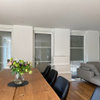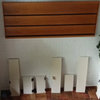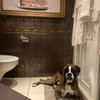Does anyone know what this strange stuff in a bathroom is?
The JOY of Blinds and Shutters
vor 6 Jahren
Hervorgehobene Antwort
Sortieren nach:Älteste
Kommentare (14)
The JOY of Blinds and Shutters
vor 6 JahrenThe JOY of Blinds and Shutters
vor 6 JahrenThe JOY of Blinds and Shutters
vor 6 JahrenThe JOY of Blinds and Shutters
vor 6 JahrenThe JOY of Blinds and Shutters
vor 6 JahrenThe JOY of Blinds and Shutters
vor 6 JahrenThe JOY of Blinds and Shutters
vor 6 Jahren

Gesponsert
Laden Sie die Seite neu, um diese Anzeige nicht mehr zu sehen






Daisy England